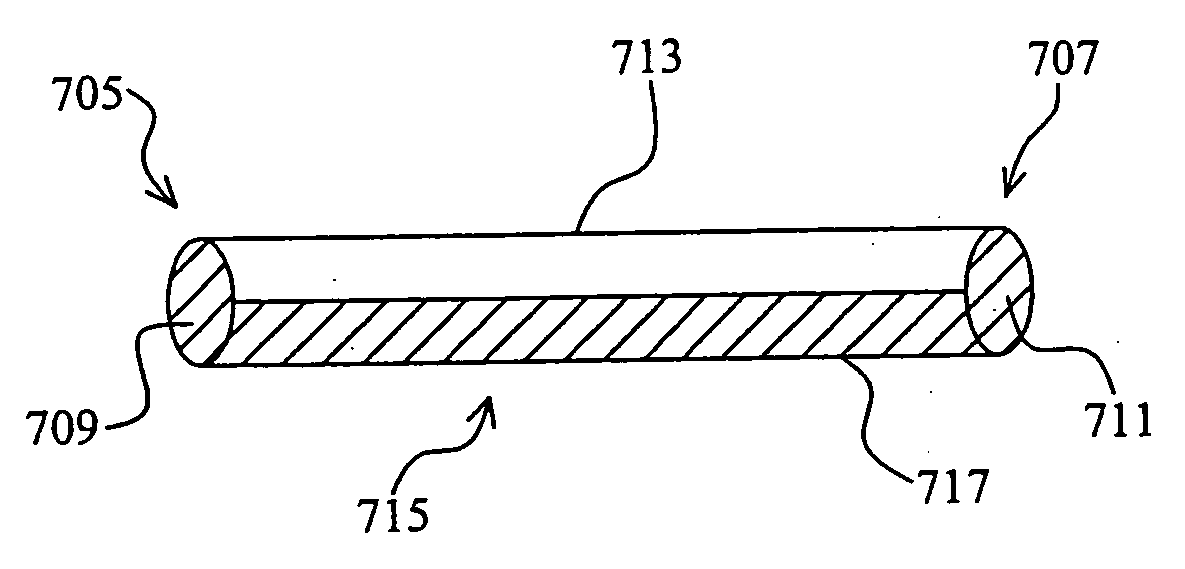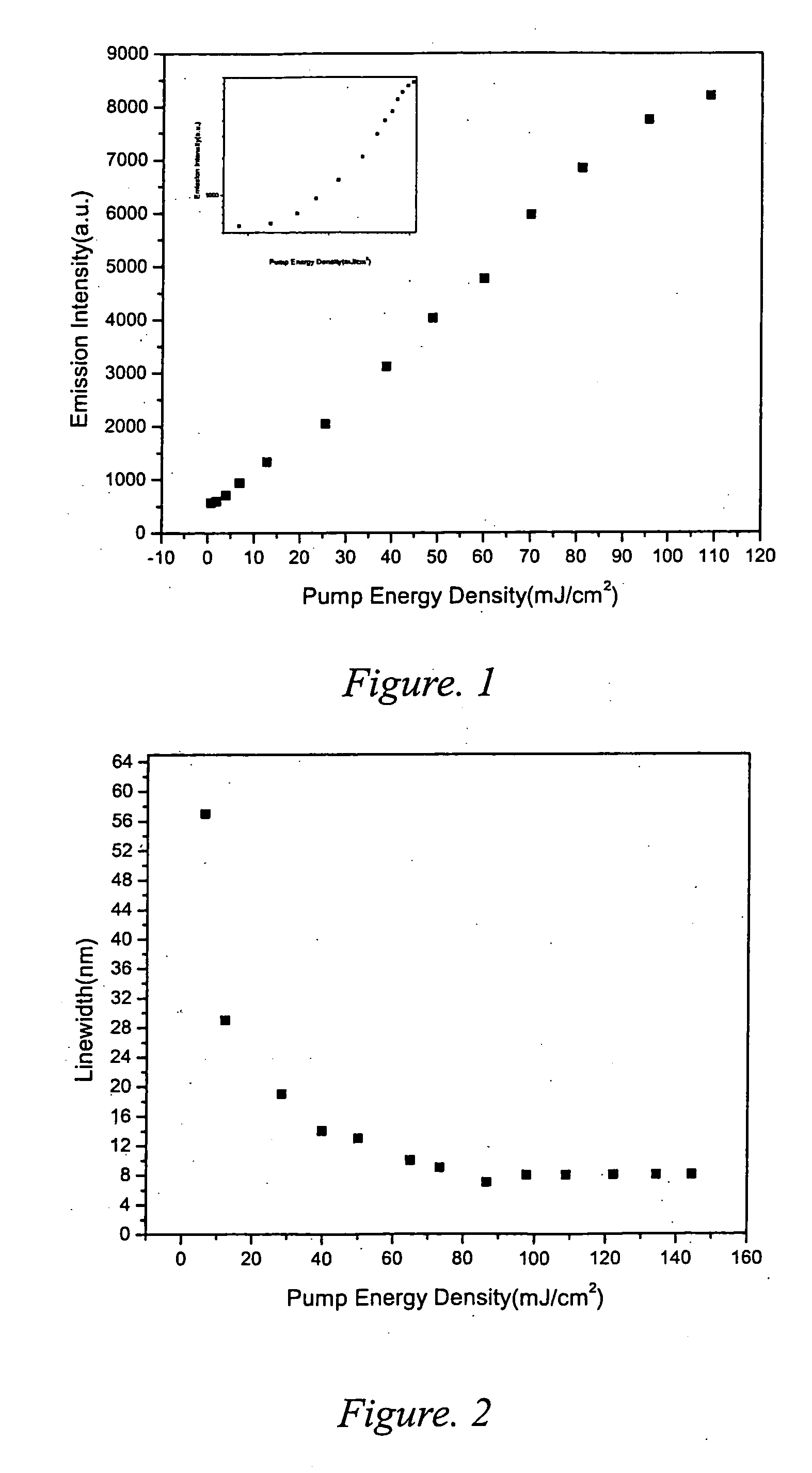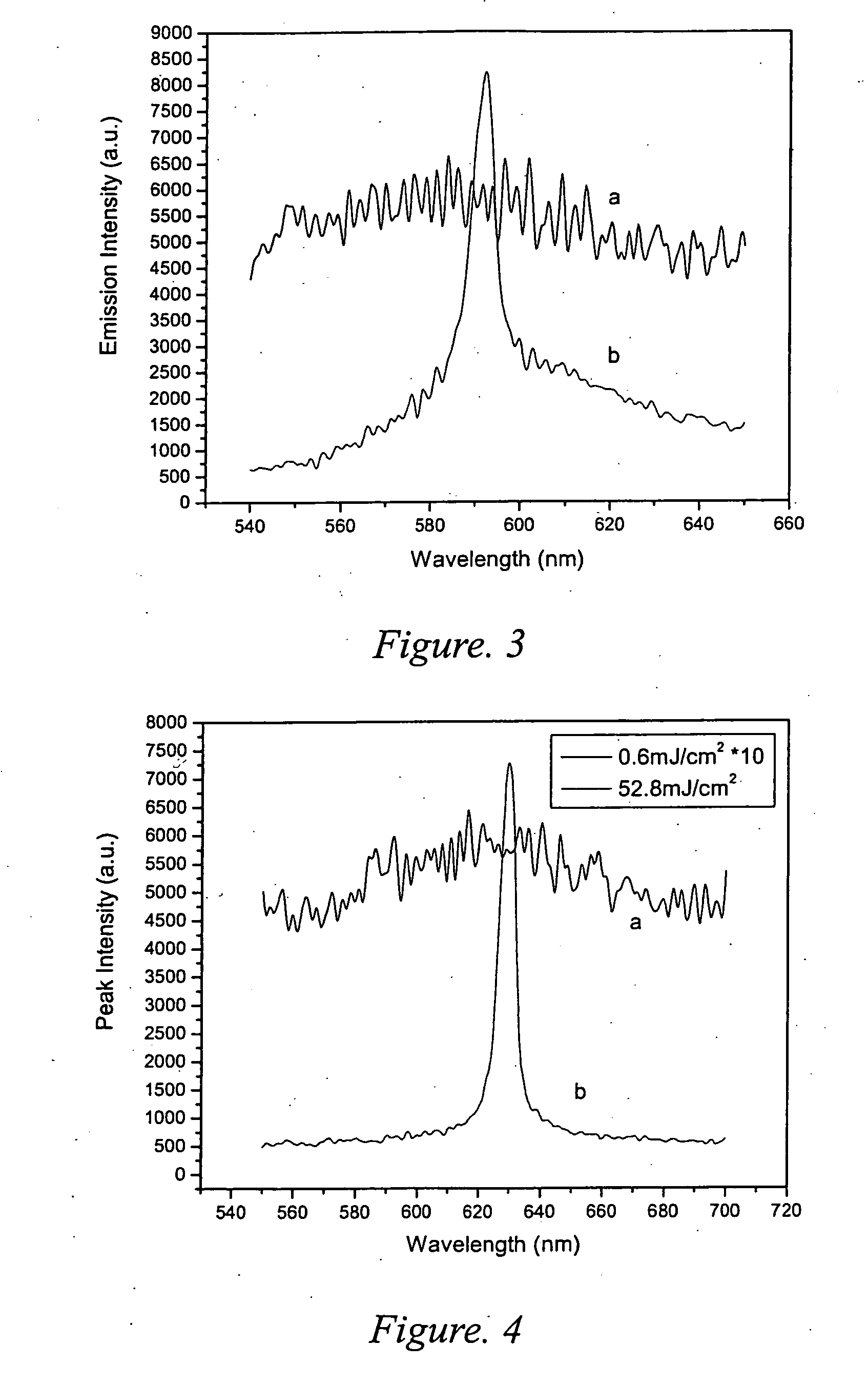Laser emitting material, method for making the same and use thereof
a laser and material technology, applied in the field of laser emitting devices and methods for making the same, can solve the problems of restricting the applicability of such lasers, inhibiting the use of such lasers in these applications, and few workable polymeric systems reported. achieve the effect of lowering the threshold
- Summary
- Abstract
- Description
- Claims
- Application Information
AI Technical Summary
Benefits of technology
Problems solved by technology
Method used
Image
Examples
Embodiment Construction
[0032]As discussed in details below, the exemplary laser emitting device embodiments of the present invention can be in the format of laser films, textiles, micro laser clusters or random laser fibers. Each includes three major components, namely, a polymer matrix as the host material (for example PMMA or PVA), gain or amplifying media or materials (for example laser dyes or conjugated polymer), and particles as scatters (for example TiO2 or ZnO, etc). When a wide-banded flash lamp or pulsed laser pumps the gain materials of such laser emitting devices, the laser emitting devices emit monochromatic lasers with high power. By changing the gain materials, laser emission with different wavelength such as 585 nm and 610 nm can be realized. In addition, particles have scattering functions and can enlarge the path photons pass in the medium. The path increase produces Amplified Spontaneous Emission. Ordered particle distribution in the localized field act as a feedback cavity and provide ...
PUM
| Property | Measurement | Unit |
|---|---|---|
| wavelengths | aaaaa | aaaaa |
| wavelengths | aaaaa | aaaaa |
| wavelengths | aaaaa | aaaaa |
Abstract
Description
Claims
Application Information
 Login to View More
Login to View More - R&D
- Intellectual Property
- Life Sciences
- Materials
- Tech Scout
- Unparalleled Data Quality
- Higher Quality Content
- 60% Fewer Hallucinations
Browse by: Latest US Patents, China's latest patents, Technical Efficacy Thesaurus, Application Domain, Technology Topic, Popular Technical Reports.
© 2025 PatSnap. All rights reserved.Legal|Privacy policy|Modern Slavery Act Transparency Statement|Sitemap|About US| Contact US: help@patsnap.com



